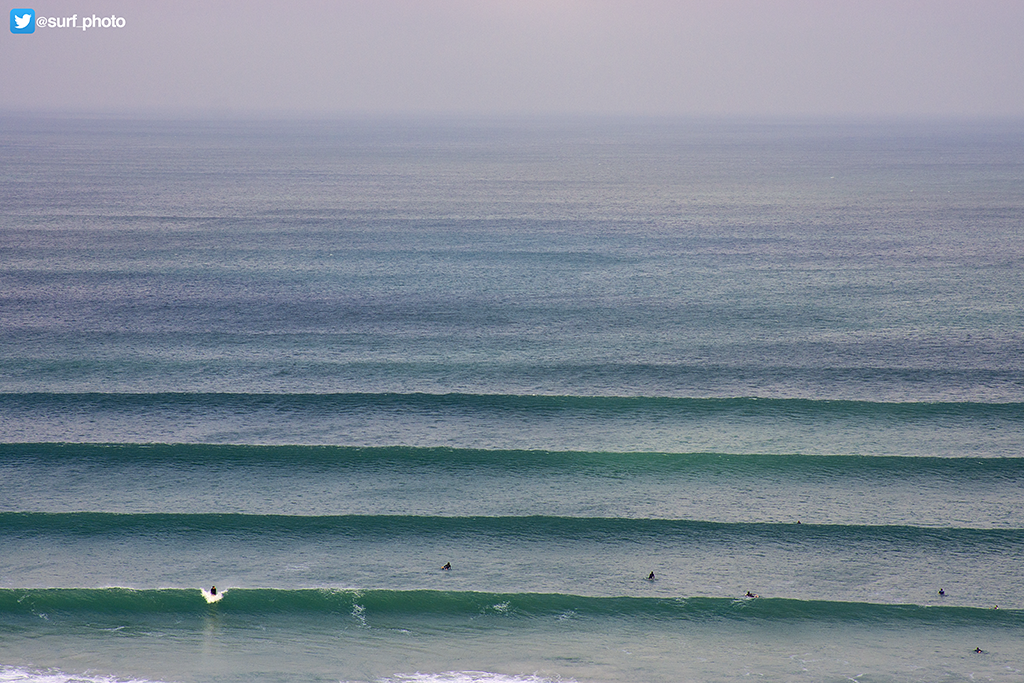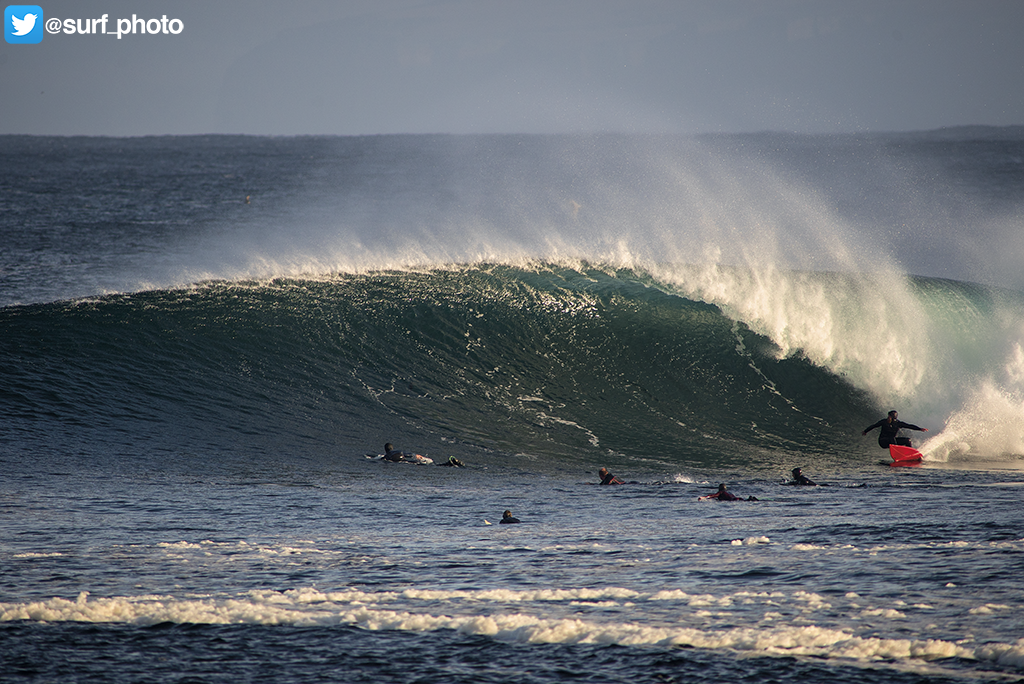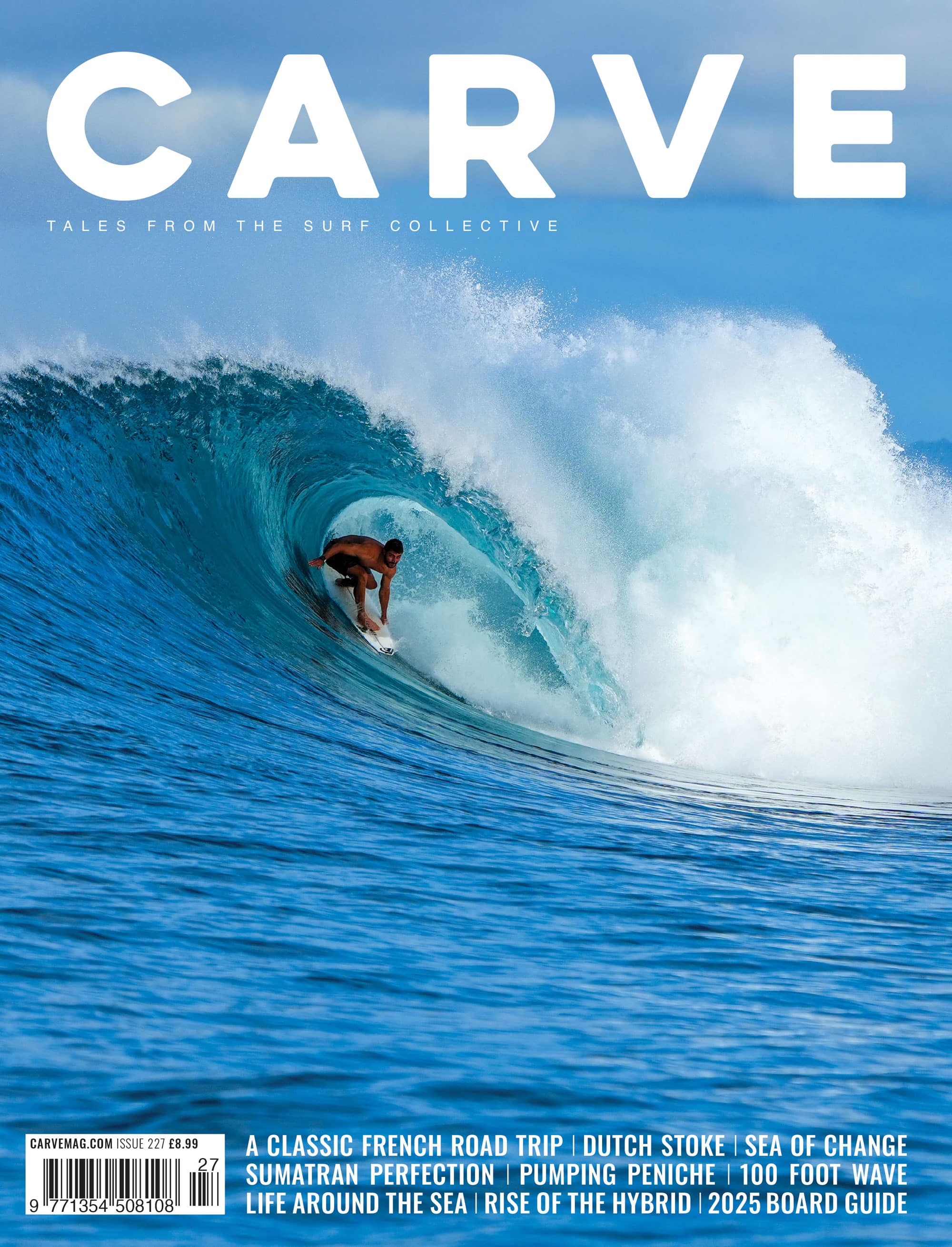Surfing is in one word: extraordinary. The simple act of standing on a board riding energy originally from the sun is mind-bending. But where do waves come from and how do they become ideal for us to slide on? Read on as we delve in to the inner workings of the surf. Don’t be scared. It’s science. And facts. But fun ones.
Beginnings
A wave has a life cycle that’s almost organic. From being born as the merest of capillary ripples in the midst of one of the great wave nurseries the baby wave grows into adolescent chop. It then hits its straps travelling out in to the world as an adult wave. Maybe wrapping around, perhaps breaking, on a few mid-oceanic island chains as it traverses thousands of miles. Later, in the prime of its life, as a clean, well defined swell, an OAP in the metaphor, it will end its days with one last hurrah against some distant shore. Maybe with you caressing a hand in its face as that energy gets turned in to barrels and noise. It’s a story repeated all over the world thousands of times a day. Waves are generated, propagated, then get ridden and die in a constant fluid dance which all comes down to our global climate system.
Why Waves Happen
You can blame the sun for everything. It’s all about energy transference on a planetary scale and waves are a happy side effect. Even that solar radiation that starts the ball rolling is a kind of a wave. An electromagnetic one of course but it’s a neat start point for the kind of waves we’re interested in.
The short version goes like this: the sun heats the earth unevenly. We all know this. The equatorial regions get the lion’s share of the energy and the poles a minimal amount. Our weather starts with this basis. The redistribution of the warmth in the middle. Hot air rises and cooler air replaces it: the basis of convection. Add in the rotation of the earth that gives us the Coriolis force, the tilt of the earth causing seasons and the distribution of oceans and continents that heat and cool at different rates to the mix and you can see it’s a complex beast.
But the takeaway is this: all that convection means packets of warm and cool air and moisture are on the move. This is the first step in the wave story.
Pressure Zone
It’s the march of low pressure systems across the world ocean that give us surfing waves (as opposed to tsunamis and tidal bore waves, that’s a whole other story). Where the warm air from the south meets the cold air from the north, and vice versa in the Southern hemisphere, is known as the polar front. Any disturbance along its length can start the formation of a low pressure system (you’ll know them as the onion rings on the pressure maps). Warm air is less dense than cold air and slides over the top and when a low forms this process becomes intense, with air being sucked into the vortex by the Coriolis force. As the polar front splits into individual warm and cold fronts (behind which the respective warm/cold air masses reside, cold fronts have blue triangles and warm red semi-circles on the pressure maps) it’s the warm sector between the fronts where the surface winds are strong and blow for some distance in the same direction. This is the key to good surf.
A Word On The Coriolis Force
You’ll know that low pressure systems rotate anti-clockwise in the northern hemisphere and clockwise in the southern. This is all down to rather complicated bit of science sussed out back in the day by French physicist and righteous boffin Gustave Gaspard Coriolis. It relates to the relative speed of the Earth’s surface. As the planet makes it’s daily rotation a point at the equator is moving far faster, and travelling further, than a point in higher latitudes. At the poles there’s no travel as motion would just be spinning. So any air mass traversing over the spinning globe is always forced to to turn right, in the northern hemisphere at least. It can be illustrated, just put an empty mug on a table, if you hold it between your flat hands and move both hands forward at the same rate then there’s no change. Do the same but push your right hand forward as you move, to represent the faster drag of the more southern area of the earth near the equator, you’ll see the mug rotate to the right. It’s this principle that guides our pressure systems rotation.
So How Exactly Do Waves Form?
Waves are the result of friction between the atmosphere and the ocean. A zephyrous breeze under two knots will generate tiny capillary waves but if the wind dies they die also thanks to surface tension of the water. Just blow in your tea. You’ll see how little it takes to make a ripple. A breeze over two knots, sustained for any length of time, will generate ‘gravity waves’ and ripples turn to waves as it becomes increasingly easy for the wind to act on the backs of the ripples. Ripples progress to ‘chop’ then to a ‘sea’. The bigger the waves the easier it is for the wind to transfer its energy to the waves; to a certain point. For wind waves to become swell there are three vital factors in the equation: the strength of the wind, the length of time it blows and the distance it blows over (fetch). If you’ve ever seen foot high waves in a lake you’ll know it doesn’t take vast tracts of ocean for waves to develop. Most models suggest the biggest swells ever seen can be generated with less than a thousand miles fetch. Next time you watch the weather try and pick out the warm sector between the fronts pointing at the UK, this is the fetch generating our waves. So short version: sun heats atmosphere, atmosphere moves about, transfers energy to ocean.
The Next Stage
Swell, the clean, defined waves that we crave as surfers have escaped the storms that made them. The confused sea becomes organised lines as the energy matures and consolidates into longer, faster waves. These swell trains can travel great distances, thousands of miles, a wave born in the Southern Ocean off Antarctica can traverse the South and North Pacific to end its days on a beach in Alaska. Our Atlantic storms traverse a more complex and chaotic ocean so we aren’t blessed with the long travelled, super mature, clean waves that grace California or Indonesia. But if a low is slow moving and gives the waves a chance to beat the storm to our shores then we can get quality surf.
How To Get A Perfect Wave
So we’ve got to a point in the story where we’ve got clean lined up swell making a beeline for our coast. It’s the interaction between swell and the land it reaches that defines if it’s any use to us as surfers. As with the whole complex saga it’s not simple. When a wave reaches the coast it ‘feels’ the bottom (when the depth becomes less than half the wavelength) so a shallow continental shelf, like ours, slows things up. A lack of continental shelf as seen so spectacularly at Teahupoo and on the North Shore results in far more powerful waves. Then there’s all kinds of modifying geography like offshore islands and trenches. Refraction can occur bending waves, the classic example being Hossegor where the waves refract on the edge of the deep ocean trench offshore and the resultant breaking waves are amplified giving the legendary punch of La Graviere while spots further north on the same coast are weaker.
Any wave will eventually break when it hits the shallows and the water depth is 1.3x it’s height. So a six foot wave will break in eight feet of water approximately. How the wave breaks depends on the local geography and wind. Offshore winds hold up the waves and dependant on the bottom contour of the shore you can get what’s known scientifically as surging, spilling or plunging breakers. Surging waves are of no use to us. Spilling waves can be found on gently sloping beaches and are perfect for beginners. Plunging breakers are the classic hollow wave favoured by advanced surfers. The key is the plunging breaker not closing out and breaking all at the same time. It’s waves that peel, along reef passes (Teahupoo), river mouths (Mundaka), reefs (Porthleven), point breaks (Rincon) or well formed beach sandbars (Hossegor) that surfers seek.
The End of the Road
So the radiant energy from the sun, that’s travelled 92 million miles across space, heats our planet. That now thermal energy gets converted into kinetic energy as wind and then passed on to the waves. Finally that bit of nuclear energy that started in the solar furnace of the sun unleashes when a wave breaks. The spectacular end point where all the kinetic energy, and a bit of sound energy, that’s just a sunbeam when you think about it, continues its energetic voyage. As you’ll remember from school one of most basic laws of science is the Law of the Conservation of Energy. Energy cannot be created or destroyed; it can only be changed from one form to another.
So that is the life cycle of a wave. A mere matter of days. We won’t go into the cycle of the stuff on the seabed as that takes millions of years…
Words & Photos Sharpy







